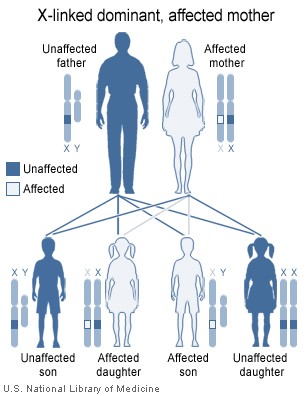In science we have been talking about identical twins. Did you know identical twins aren’t actually identical? In fact they have different finger prints. Believe it or not know one has the same finger print. In this blog, you will learn how this possible, especially if you listen to our end of unit podcast at the end. However to make the podcast we needed to know more about genetics. Throughout this unit we were using the Learning Guide for information and it had some activities.
I’m sure you are very confused with this picture. Infact, two sets of identical twins married each other and had identical children. Read this artical if you want to learn more. Something that I found very interesting was both of the wives got married on the same day and even wore the same wedding dress.
Building up to the podcast project, we were given many work sheets and activities to help us understand genetics. We started off by learning about:
– meiosis and mitosis (a review from last year)
– Karyotypes
– Blood types
– Pedigree
– DNA fingers printing
Some of the terms was a review from last year, however I there were some that I needed to look up. I didn’t know the definition of hereditary or a trait.
In class we also watched some videos for a better explanation on the topic. The first video we watched was about DNA structure and replication. This video gave me a better understanding what DNA looks like and key facts about DNA.
The next video was about hereditary. Hereditary is the passing on genetic traits from parents to kids. This video explained how you are a mixture of both your parents traits and how they are passed on. The Mendelian trait was mentioned. In Mendelian inheritance, a child receiving a dominant allele from either parent will have the dominant form of the phenotypic trait or characteristic.
The picture above explains that each child come be given their fathers trait or mothers. It is chosen at random. The child will have a mixture of both parents but they might have more traits from the father or mother. It’s all to do with dominant traits and recessive traits.
Here I’ll give you an example, having freckles is a dominant trait, that will give you a capital letter, for example (F). Not having freckles is the recessive trait for example lower case (f). Each person has two letters, for example your mum could have capital F and lowercase f which means she would have freckles because the capital F is dominant. The only way to not have freckles, would be to get two lowercase f’s, which would be called homozygous because both of the letters are the same. However, if the letters were different then it would be called heterozygous.
Here is a table I created to show what traits I got from my mother, and which traits I got from my father. A few of the answers I didn’t know. For example I was’t sure if my parents ears wear attached or not, so I just guessed. From this table it shows that I have more of my dads traits although it’s not that accurate, but at least you can have an idea of how to figure it out.
Now I will talk about Punnett squares, they are similar to was I have talked about:
This cart shows the likely hood of the bead cub having brown or black fur. There two words mentioned, genotypes and phenotypes. A genotype is the genetic constitution of an individual organism. A phenotype is the set of observable characteristics of an individual resulting from the interaction of its genotype with the environment.
The project:
Like I mentioned earlier, our project was to create a podcast explaining the following. At the end of the podcasts the goal was to answer the driving question, how does DNA and genetics determine the characteristics of living things?
It was pretty challenging to come up with an interesting way to explain twins, without the podcast being boring. In the end, my partner and I decided to do a interview. Basically I was the child of different two identical twins that married each other. Claire was asking all of the questions.
Here is our podcast and the script.
We got pretty good feedback on our project. Leading up to this project I learned a lot about DNA and genetics and the project tied it all together. It was a fun project and it wasn’t too hard.








